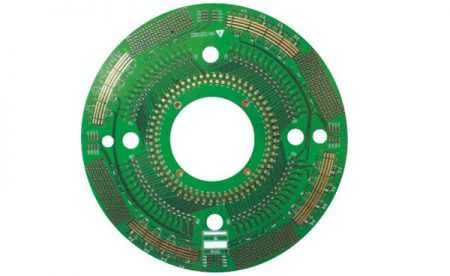- +86-755-23012705
- Building 3, Jinfeng Industrial Park, Fuyong Street, Baoan District, Shenzhen ,China
- [email protected]
Menu
There are many common welding defects in circuit board processing. The following figure shows sixteen common welding defects.
The following is a detailed description of common welding defects, appearance characteristics, hazards, and possible causes.

1. Welding
a.) Appearance Characteristics: There is an obvious black boundary line between the solder and the lead of the component or the copper foil, and the solder is sunken toward the boundary.
b.) Hazards: Can not work properly.
c.) Possible Causes:
–The component leads are not cleaned, tinned or oxidized.
–The printed circuit board is not clean, and the sprayed flux is of poor quality.
2. Solder accumulation
a.) Appearance Characteristic: The solder joint structure is loose, white and dull.
b.) Hazards: Insufficient mechanical strength may cause false welding.
c.) Possible Causes:
–The solder quality is not good.
–The welding temperature is not enough.
— When the solder is not solidified, the lead of the component becomes loose.
3. Too Much Solder
a.) Appearance Characteristics: The solder surface is convex.
b.) Hazards: Waste solder and may contain defects.
c.) Possible Causes:
–The solder evacuation is too late.
4. Too Little Solder
a.) Appearance Characteristics: The soldering area is less than 80% of the pad, and the solder does not form a smooth transition surface.
b.) Hazards: Insufficient mechanical strength.
c.) Possible Causes:
— The solder fluidity is poor or the solder is withdrawn too early.
— Insufficient flux.
— The welding time is too short.
5. Rosin Welding
a.) Appearance Characteristics: Rosin slag is contained in the weld.
b.) Hazards: Insufficient strength, poor continuity, and possibly off and on.
c.) Possible Causes:
— Too many welders or have failed.
— Insufficient welding time and insufficient heating.
— The surface oxide film is not removed.
6. Overheating
a.) Appearance Characteristics: The solder joints are white, without metallic luster, and the surface is rough.
b.) Hazards: The pad is easy to peel off and the strength is reduced.
c.) Possible Causes:
-The power of the soldering iron is too large and the heating time is too long.
7. Cold Welding
a.) Appearance Characteristics: The surface becomes tofu-like particles, and sometimes there may be cracks.
b.) Hazards: The strength is low and the conductivity is not good.
c.) Possible Causes:
–There is shaking before the solder has solidified.
8. Poor Infiltration
a.) Appearance Characteristics: The contact between the solder and the soldering interface is too large and not smooth.
b.) Hazards: The intensity is low, and it is blocked or on and off from time to time.
c.) Possible Causes:
— The weldment is not cleaned up.
— Insufficient flux or poor quality.
— The weldment is not fully heated.






XPCB Limited is a premium PCB & PCBA manufacturer based in China.
We specialize in multilayer flexible circuits, rigid-flex PCB, HDI PCB, and Rogers PCB.
Quick-turn PCB prototyping is our specialty. Demanding project is our advantage.
Tel : +86-136-3163-3671
Fax : +86-755-2301 2705
Email : [email protected]
© 2023 - XPCB Limited All Right Reserve
